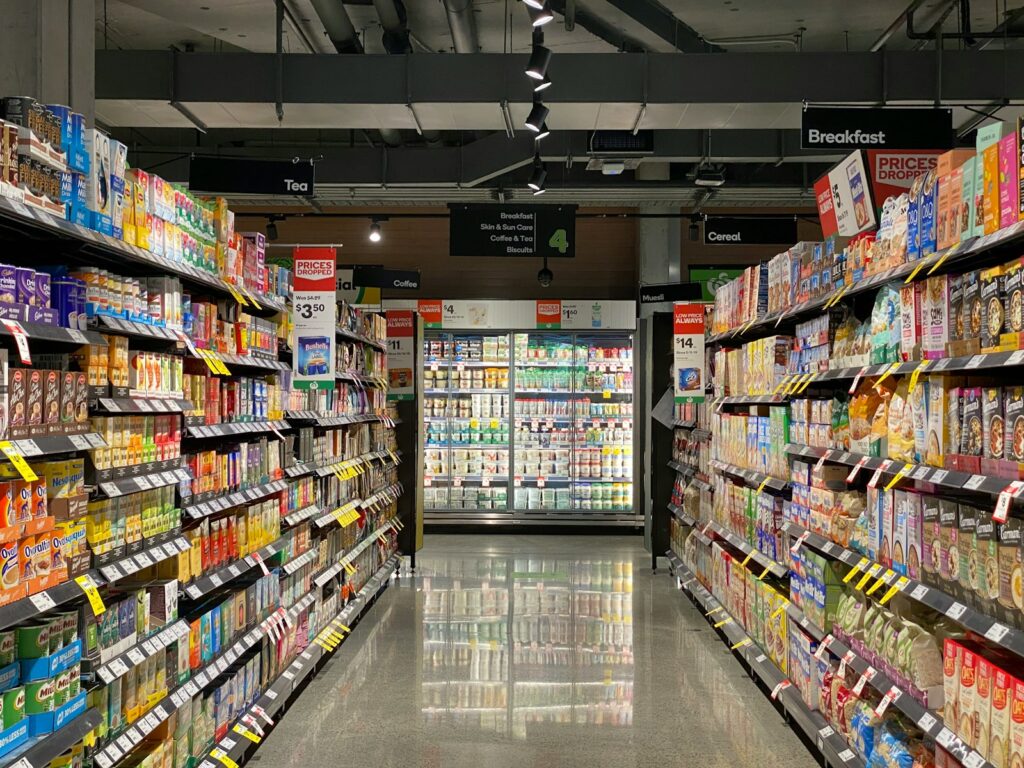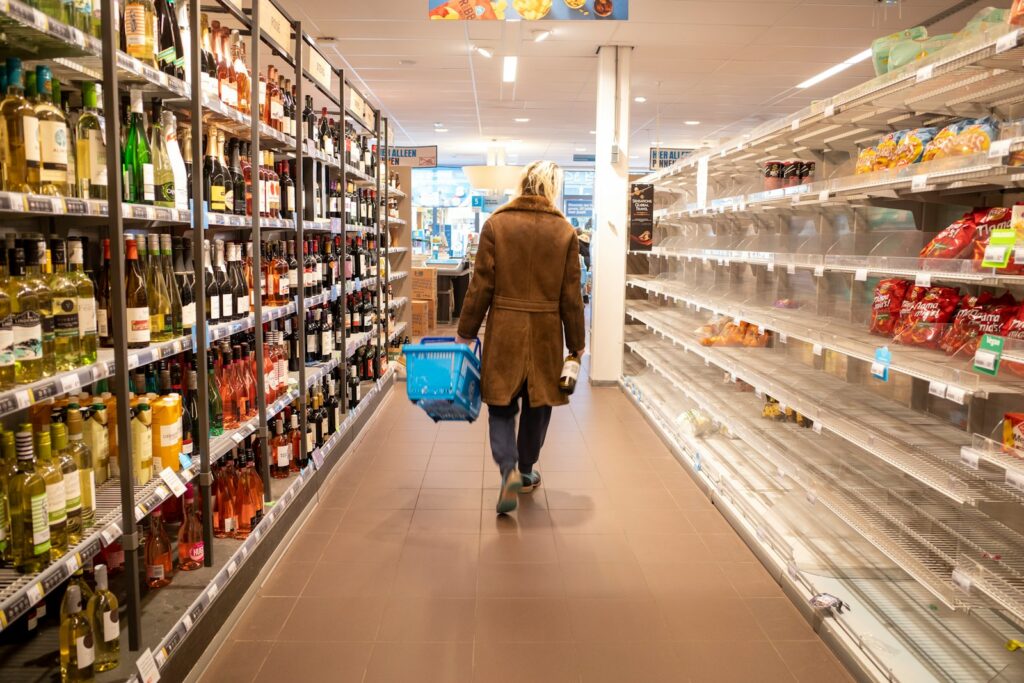
In today’s globally connected environment, consumers are more informed and conscientious than ever before. Their interest extends beyond flavor to the origins and composition of their food. This curiosity is driven by rising concerns over transparency in food sourcing, influenced in part by media such as the documentary “Rotten,” which encourages viewers to question how their food is produced and delivered.
These concerns are not merely academic. Environmental issues, such as the emissions associated with long-distance food transportation, and the very real threats posed by food recalls and safety violations, have elevated the stakes. For businesses, the economic impact is substantial, with industry studies showing that a single food recall can cost a company an average of $10 million. These concerns underscore a growing demand for accountability in the food supply chain.

The Rise of Innovative Technological Solutions
To meet these challenges, technology is stepping in. Platforms like FoodLogiQ are offering innovative solutions to trace food across complex global supply chains. Companies such as Whole Foods Market and Chipotle have embraced this technology, which aims to improve transparency and safety from the point of origin to the consumer.
FoodLogiQ is designed to provide end-to-end visibility, integrating various parts of the food production process into one unified system. The platform’s hallmark is its ability to achieve “farm-to-fork traceability,” ensuring that each stage of a food product’s journey is recorded and accessible.
Its adaptability makes it applicable across the food ecosystem. From large manufacturers and retailers to growers and marketers, FoodLogiQ brings stakeholders together to enhance oversight and mitigate risks. The platform’s suite of tools includes supplier management, food safety compliance, incident tracking, recall capabilities, and comprehensive chain traceability.

Precision and Accountability in Practice
One of the standout features of FoodLogiQ is its capacity for targeted response during crises. In the event of a food contamination issue, the platform can identify the exact location of the affected product within the supply chain and facilitate its removal with precision. This targeted approach allows companies to contain issues quickly, minimizing both public health risks and financial losses.
Beyond crisis management, FoodLogiQ enhances day-to-day operations. It consolidates tracking mechanisms into a cloud-based system, easing the compliance burden and simplifying audits. In cases of recalls, businesses benefit from a more agile and cost-effective process.
For consumers, these technological advancements translate into greater trust and informed decision-making. FoodLogiQ allows companies to share vital details with their customers, such as the harvest location, use of pesticides, processing methods, and distribution path. This transparency empowers consumers to make choices that align with their values.

Whole Foods Market: Leading by Example
Whole Foods Market exemplifies how a retailer can integrate technology with customer service. Their adoption of FoodLogiQ reinforces their longstanding commitment to quality and responsible sourcing. From the moment produce leaves the farm to the time it reaches store shelves, every step is monitored for freshness and integrity.
Convenience is also a key focus. Through Amazon, Whole Foods Market offers grocery delivery and pickup options via amazon.com/wholefoods or the Amazon app. Customers can input their ZIP code, add items to their cart, and choose a delivery or pickup window. Fees are clearly communicated: $9.95 for Amazon Prime members and $13.95 for non-members, with additional charges for expedited options.
Grocery pickup is complimentary for all order sizes, although rush pickup may incur extra charges. Upon notification that an order is ready, customers can check in via email or the app. On arrival, they are guided to a designated parking spot, where staff deliver their groceries. While most locations offer curbside service, some may require customers to collect orders inside.
Flexibility and Customer-Centric Practices
Whole Foods Market demonstrates a thoughtful approach to real-world issues such as inventory variability. If an item is out of stock, trained staff can suggest substitutions that closely match the original product in brand, price, and flavor. Customers can accept or decline these recommendations, either during checkout or via the Amazon app.
Customers also have the option to choose “Don’t Substitute” during checkout, and those with text notifications enabled receive real-time alerts about out-of-stock items. Suggested alternatives can be managed directly in the app, and a full overview of changes is available in the order details section.
To extend accessibility, Whole Foods Market ships nonperishable items nationwide, including products from its 365 and Whole Paws brands. Prime members benefit from free two-day shipping where available.

Adapting to Regulatory and Social Needs
In response to evolving regulations, Whole Foods Market has adjusted its operations accordingly. For example, in New Jersey, legislation prohibits the use of single-use plastic and paper bags. Whole Foods complies fully with this regulation and currently does not charge extra for reusable bags used in online orders, though these bags cannot be returned.
Accessibility is further enhanced through the acceptance of SNAP EBT payments for qualifying purchases, both for pickup and delivery in the U.S. Customers can manage their benefits through www.amazon.com/snap or directly within their Amazon account. However, SNAP funds cannot be applied to delivery or service fees, in compliance with USDA rules.
For Canadian customers, grocery delivery is offered via Instacart, dependent on local availability. This service expansion reflects the brand’s continued investment in customer satisfaction and convenience.

FoodLogiQ’s success is evident in its widespread adoption. In addition to Whole Foods Market, major brands such as Chipotle, Carl’s Junior, Subway, Buffalo Wild Wings, and Panda Restaurant Group utilize the platform. Today, more than 7,000 businesses across over 100 countries rely on its technology, signaling a transformative shift in how food safety and transparency are managed globally.
This momentum has attracted strong investor interest. The company recently announced $19.5 million in new financing aimed at expanding its reach and investing in research and development. This funding supports the platform’s ongoing mission to advance global traceability standards.
Katy Jones, FoodLogiQ’s Chief Marketing Officer, captures the significance of this shift by stating that “Food companies are embracing global standards to increase efficiencies and build a foundation for traceability and supply chain visibility.”
This vision reflects a future where food safety, transparency, and operational efficiency are no longer optional but expected. Through the partnership of technological innovation and consumer-driven demand, the journey from farm to fork is becoming more accountable, precise, and trusted than ever before.




